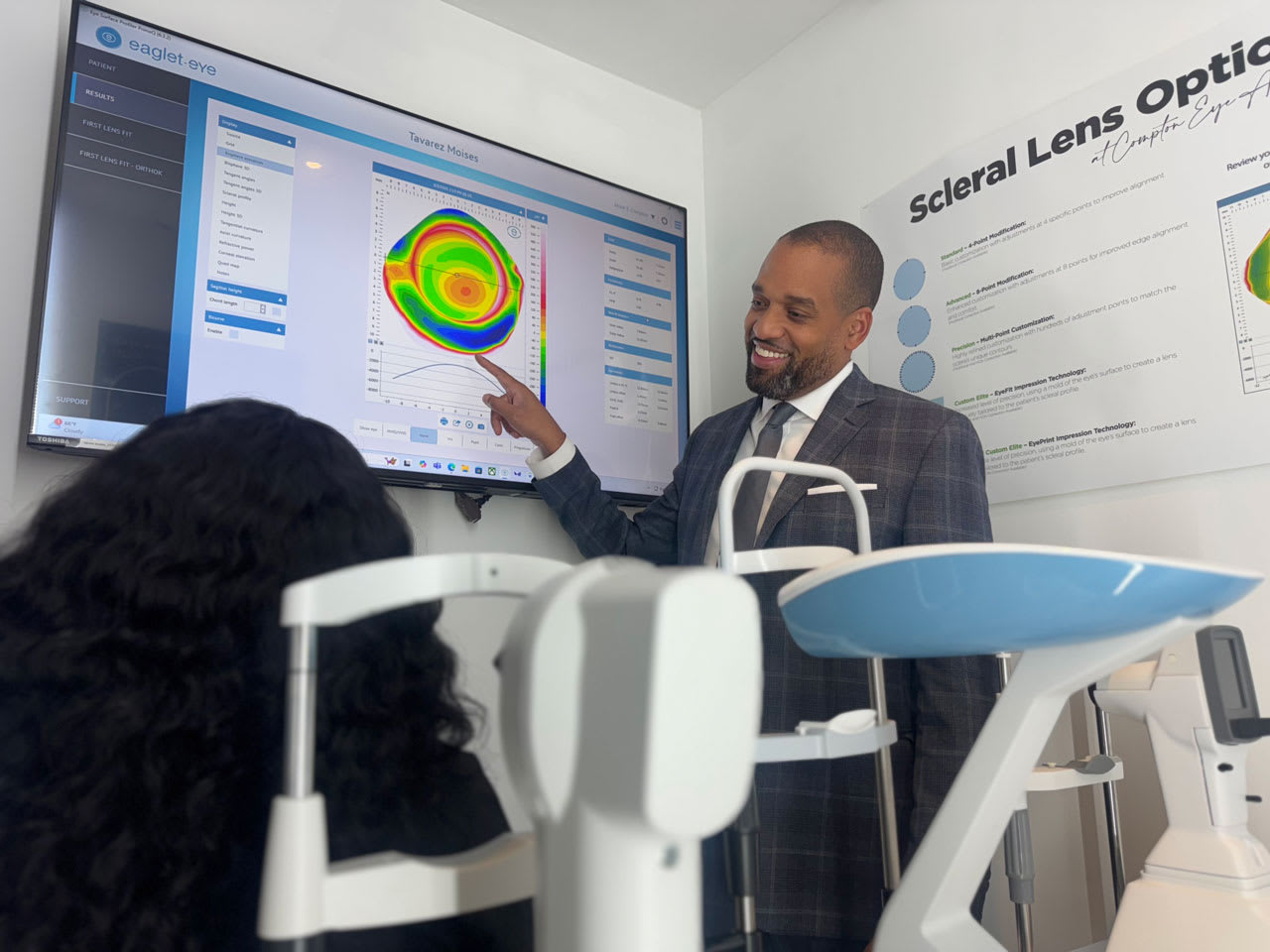ADVANCED TECHNOLOGY has revolutionized the way practitioners approach contact lens fitting. Profilometry and other imaging modalities now allow them to design lenses with a level of precision once reserved for surgical procedures.
For experienced fitters, these tools are essential for managing complex corneal profiles, optimizing lens vault, and refining edge alignment. But in focusing on what the technology does for practitioners, are they missing what it could do for their patients? What if its greatest untapped value isn’t clinical at all? What if the real power of profilometry lies in its ability to engage and reassure the patient sitting in the exam chair?
Hiding Behind Technology
In the past, I would run profilometry scans, review the maps, and make decisions with minimal explanations to the patient. In doing that, I was unintentionally creating a gap. Put yourself in that patient’s position. The patient sees expensive-looking equipment and hears unfamiliar terminology. They may accept your recommendation, but they don’t always understand it. Is it possible this could lead to hesitation about cost or commitment?
Patients don’t need to interpret elevation maps the way we do, but they do need to feel the significance of what you’re showing them. Otherwise, advanced care just looks like a higher bill.
Visual Validation
One of the simplest yet most impactful strategies that we have implemented is reviewing the image as a specific part of the exam. After the image is obtained, patients are seated in front of their scan and shown an image of a “regular” cornea for comparison.
When a patient sees their own profilometry scan, especially one that has a clear area of irregularity, the conversation changes. Suddenly, it’s not about whether they “want to try” a scleral lens with quadrant-specific or freeform technology. Instead, it’s about whether they want to address a problem that is now undeniably visual.

Technology as a Trust Multiplier
Outside of the eyecare profession, patients are accustomed to data and diagnostics. Society has groomed them to expect their care to be personalized. Leveraging profilometry as part of a transparent, collaborative decision-making process not only is more engaging, but also builds trust.
Studies in patient experience consistently show that shared decision-making improves satisfaction and treatment adherence (Lopez-Olivo and Suarez-Almazor, 2019). When you bring patients into the process, they feel respected and heard. They’re not being sold something, they’re being shown something.
A Differentiator in a Crowded Market
Many specialty lens patients have worn contact lenses before, but very few have experienced a scan-based fitting or been guided through their own ocular surface data in a meaningful way. This moment of insight is powerful. It shifts the perception of contact lenses from a commodity to a customized solution, tailored specifically to the patient’s needs.
Delivering a better experience can make all the difference. When patients see that their care is based on something as personal and precise as their own digital eye scan, they recognize the level of detail and intention behind the care recommendations. They feel the difference in the process before they ever feel it in the lens. That’s what sets your practice apart.
References
1. Lopez-Olivo MA, Suarez-Almazor ME. Digital patient education and decision aids. Rheum Dis Clin North Am. 2019;45(2):245-256. doi: 10.1016/j.rdc.2019.01.001




